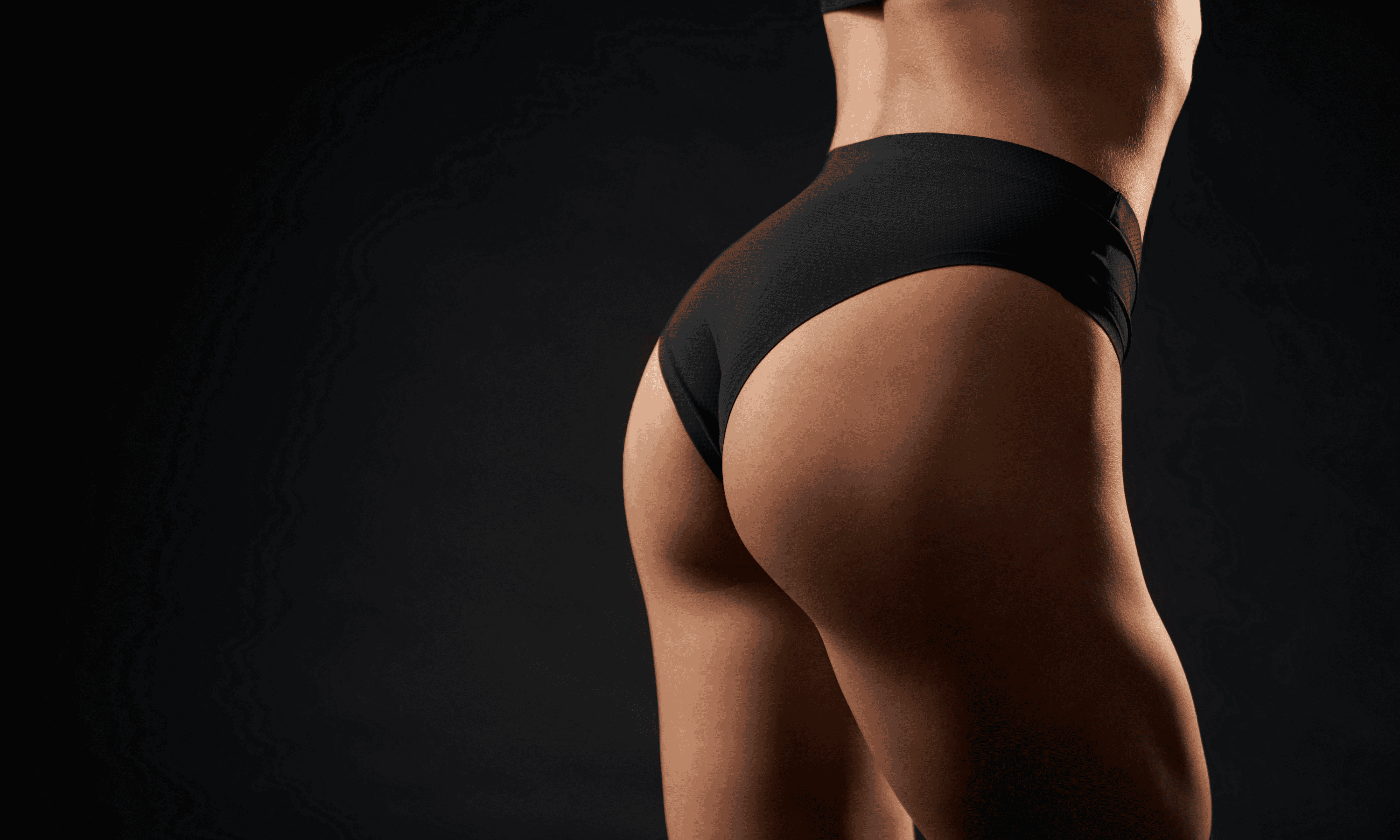
What is a Brazilian Butt Lift?
- Why the popularity?
- Key considerations
- Brazilian Butt Lift costs around the world
- Questions patients can ask when considering a Brazilian Butt Lift
- What technique is used to harvest fat for a BBL, and where is the fat typically taken from?
- How much of the injected fat survives after a BBL, and is a second procedure sometimes necessary?
- Are there specific risks associated with a BBL compared to other cosmetic surgeries?
- How long is the recovery period after a BBL, and when can patients sit or lie on their back again?
- Does a BBL change the shape of the buttocks in the long term if weight fluctuates?
A Brazilian Butt Lift (BBL) is a cosmetic surgical procedure intricately designed to enhance and shape the buttocks, employing the natural resources of the body. In contrast to traditional implants, a BBL involves a two-step process. First, fat tissue is carefully harvested from donor areas, typically the abdomen, thighs, or flanks. Subsequently, this harvested fat undergoes purification before being meticulously injected into the buttocks.
This distinctive technique not only imparts a fuller and more sculpted appearance to the buttocks but also ensures a more natural outcome. By utilizing the patient's own fat, the Brazilian Butt Lift not only enhances the size and contour of the buttocks but also allows for a harmonious integration with the surrounding tissues, contributing to a result that is both aesthetically pleasing and authentically aligned with the individual's body proportions.
Why the popularity?
1. Natural-looking results
The use of the body's own fat makes BBL appealing to those seeking a natural appearance. Since the fat tissue is reintroduced into the body, the results are often more subtle and harmonious compared to implants.
2. Dual benefit
Another advantage of the BBL is that it not only shapes the buttocks but also reduces unwanted fat in other parts of the body. This gives the patient a more streamlined and balanced body contour.
3. Minimally invasive
In comparison to traditional surgical procedures, the Brazilian Butt Lift is less invasive. As there are no implants involved, there are fewer risks of complications, and the recovery time is generally shorter.
Key considerations
Despite the growing popularity of the Brazilian Butt Lift, there are some important considerations that potential patients should keep in mind:
1. Surgeon's experience
Choosing an experienced and qualified surgeon for this procedure is crucial. A trained professional will not only apply the right techniques but also discuss realistic expectations with the patient.
2. Postoperative care and recovery
A successful BBL requires strict adherence to the surgeon's instructions for postoperative care and recovery. This includes avoiding prolonged sitting and lying on the buttocks for a specific period.
3. Risks and complications
Like any surgical procedure, there are risks associated with the Brazilian Butt Lift, such as infection, irregularities in fat distribution, and allergic reactions to anesthesia.
The Brazilian Butt Lift offers an attractive option for those seeking a natural and balanced body contour. However, as with any cosmetic procedure, it is crucial to be well-informed and carefully consider the decision. Always consult with a qualified professional to make the right choice for your unique situation.
Brazilian Butt Lift costs around the world
Brazilian Butt Lift (BBL) costs can vary significantly depending on the country and region where the procedure is performed. Below is a comparison of prices in 20 different countries, converted into US dollars (USD) for clarity:
- United States: $4,000 - $12,000 USD
- United Kingdom: £4,000 - £8,000 GBP (approx. $5,300 - $10,600 USD)
- Canada: $6,000 - $10,000 CAD (approx. $4,700 - $7,900 USD)
- Australia: $8,000 - $15,000 AUD (approx. $5,800 - $10,900 USD)
- Germany: €4,000 - €9,000 EUR (approx. $4,500 - $10,000 USD)
- France: €4,000 - €8,000 EUR (approx. $4,500 - $8,900 USD)
- Brazil: R$15,000 - R$35,000 BRL (approx. $2,800 - $6,600 USD)
- Mexico: $50,000 - $100,000 MXN (approx. $2,500 - $5,000 USD)
- Japan: ¥600,000 - ¥1,500,000 JPY (approx. $5,500 - $13,700 USD)
- South Korea: ₩5,000,000 - ₩15,000,000 KRW (approx. $4,300 - $12,900 USD)
- India: ₹300,000 - ₹800,000 INR (approx. $4,000 - $10,700 USD)
- South Africa: R60,000 - R150,000 ZAR (approx. $3,800 - $9,600 USD)
- UAE (Dubai): 20,000 - 50,000 AED (approx. $5,400 - $13,600 USD)
- Saudi Arabia: 20,000 - 50,000 SAR (approx. $5,300 - $13,300 USD)
- Russia: 200,000 - 500,000 RUB (approx. $2,700 - $6,800 USD)
- China: ¥30,000 - ¥80,000 CNY (approx. $4,700 - $12,500 USD)
- Spain: €4,000 - €8,000 EUR (approx. $4,500 - $8,900 USD)
- Italy: €4,000 - €9,000 EUR (approx. $4,500 - $10,000 USD)
- Netherlands: €4,000 - €8,000 EUR (approx. $4,500 - $8,900 USD)
- Switzerland: CHF 10,000 - CHF 20,000 (approx. $10,900 - $21,800 USD)
These prices are approximate and can vary based on factors such as the surgeon's experience, the amount of fat transferred, and the clinic's location within each country. It's important to consult with qualified professionals and thoroughly research before undergoing a Brazilian Butt Lift procedure.

Questions patients can ask when considering a Brazilian Butt Lift
A Brazilian Butt Lift (BBL) is a popular cosmetic procedure that involves fat transfer to enhance the shape and size of the buttocks. For those considering this procedure, it's crucial to ask the following questions during the consultation:
- What does the Brazilian Butt Lift procedure entail?
Could you explain the process of a Brazilian Butt Lift, including how fat is harvested and transferred to the buttocks? What are the key steps involved? - What are the potential risks and complications associated with a BBL?
What are the possible risks and complications during and after a Brazilian Butt Lift? How are these risks managed, and what steps are taken to minimize complications? - What results can I realistically expect from a Brazilian Butt Lift?
What kind of results can I expect in terms of shape and size enhancement of my buttocks? How long will it take to see the final results, and what is the recovery process like? - Can I see before and after photos of previous patients who underwent a BBL?
Do you have before and after photos of patients with similar body types who have had a Brazilian Butt Lift? This will help me understand the potential outcomes better. - What is the total cost of a Brazilian Butt Lift, and what does it include?
What is the estimated cost of the Brazilian Butt Lift procedure, including anesthesia, facility fees, and follow-up appointments? Are there any additional costs that I should be aware of? - What is your experience and qualification in performing Brazilian Butt Lift procedures?
How many Brazilian Butt Lift procedures have you performed? Are you board-certified in plastic surgery, and do you specialize in this particular procedure?
Asking these questions during the consultation will provide you with detailed information about the Brazilian Butt Lift procedure and help you make an informed decision about whether it's the right option for achieving your aesthetic goals. Each patient's anatomy and goals are unique, so discussing your specific concerns with a skilled plastic surgeon is essential for a successful outcome.
What technique is used to harvest fat for a BBL, and where is the fat typically taken from?
In a Brazilian Butt Lift (BBL), fat is harvested using liposuction, usually from areas such as the abdomen, flanks, thighs, or lower back. The fat is then purified before being injected into the buttocks to create volume and contour. It's important that the patient has enough fat in these donor areas, as a BBL is not suitable for those with very low body fat.
How much of the injected fat survives after a BBL, and is a second procedure sometimes necessary?
On average, 60 to 80% of the injected fat survives after a BBL, while the remaining fat is reabsorbed by the body. The final amount of fat that remains depends on factors such as surgical technique, post-operative care, and the body’s natural fat absorption process. In some cases, a second procedure (touch-up) may be needed to achieve the desired volume or to correct any asymmetries.
Are there specific risks associated with a BBL compared to other cosmetic surgeries?
Yes, a BBL carries specific risks. One of the most serious risks is fat embolism, where fat cells accidentally enter the bloodstream and travel to vital organs such as the lungs or heart, which can be life-threatening. To minimize this risk, it is crucial that the surgeon is experienced in BBL techniques and injects the fat into the subcutaneous layer, far away from deep muscles and blood vessels.
How long is the recovery period after a BBL, and when can patients sit or lie on their back again?
Recovery after a BBL requires patience. Patients should avoid sitting directly on their buttocks or lying on their back for about 2 to 6 weeks to prevent damaging the newly transferred fat. Special pillows or reclining positions are often recommended. Most people can resume light activities after 4 weeks, but full healing and final results may not be visible for several months.
Does a BBL change the shape of the buttocks in the long term if weight fluctuates?
Yes, weight fluctuations can affect the shape and volume of the buttocks after a BBL. Since the injected fat behaves like other body fat, weight gain can lead to enlargement of the buttocks, while weight loss can reduce volume. Therefore, maintaining a stable weight is important to preserve long-lasting results.


